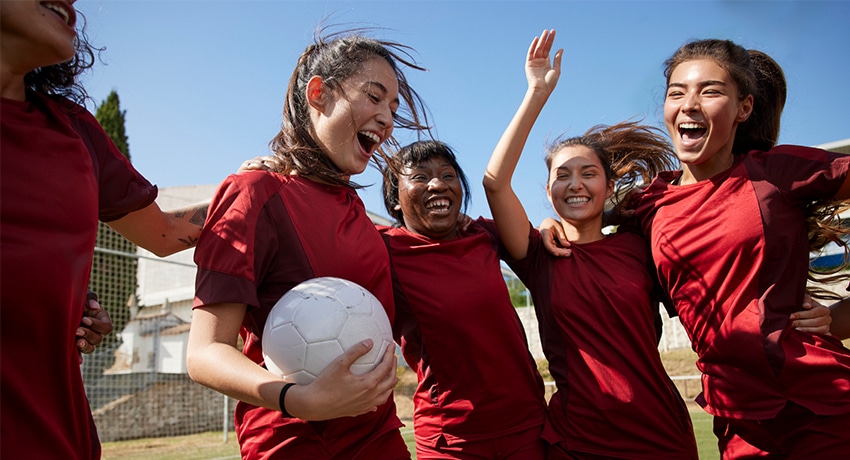The season for competitive and recreational sports is here, but a medical expert advises players to ease into sports — not spring into them!

“Many people tend to shut down over the winter, then they want to start playing at full speed again in the spring,” said Phillip N. Williams, MD, orthopedist with UT Physicians. “Sports are great to start back up, but to prevent injuries, it’s best to increase the volume and intensity of your activity for a couple of weeks before you just go and play your first game of soccer.”
According to Williams, many injuries in the spring are due to strain and overuse of muscles from both recreational and competitive sports.
“A lot of players, especially in competitive sports, push past the pain and ignore the signals from their body,” said Williams, assistant professor of orthopedic surgery with McGovern Medical School at UTHealth Houston. “We hear, ‘no pain, no gain’ all the time, but that goes counter to what we do in orthopedics.”
Williams continued: “Slow down when you need to. Take a break when you need to. It’s better to sit out for minutes than to hurt yourself and sit out for weeks.”
For any sport or physical activity, always “warm up” and prime the body for play.
“Before playing, you should gently stretch your muscles and get your heart rate up with some cardiovascular activity, like jogging or jumping jacks,” Williams said. “Also, don’t forget to cool down the body after an event by walking for a couple of minutes afterward.”
Also make an intentional effort to learn proper posture, form, and technique.
“Many injuries occur because players didn’t learn how to correctly perform a movement, often just using one part of the body and not the whole body to balance and distribute pressure,” said the former college athlete. “To help prevent injuries and become a better player, focus on your quality of play.”
Additionally, wear the proper equipment and shoes to better protect bones and muscles, and stay hydrated to help reduce muscle fatigue.
To help players of all ages, the sports medicine physician explains some common sports injuries and offers some smart plays to avoid them.
Throwers, servers, and strokers
Anyone who participates in baseball, volleyball, tennis, swimming, or other sport that requires considerable overarm motions is at higher risk of experiencing elbow injuries and shoulder injuries to the rotator cuff and labrum.
Smart plays: Dynamically stretch the entire body for at least five minutes. Then start with light tosses or swings to warm up the shoulder and elbow.
Runners
A sprinter is more prone to pulled hamstrings, calf strains, and other leg muscle injuries due the extremely fast movements. An endurance runner is more prone to shin splints, Achilles tendonitis, and other leg and ankle injuries due to prolonged pounding and strain.
Smart plays: Dynamically stretch the entire body for at least five minutes, paying extra attention to thigh and calf muscles. Cool down after an event by light jogging for a few minutes. Long-distance runners should wear well-cushioned running shoes and change shoes when they wear out.
Pivoters and cutters
Anyone who plays basketball, soccer, lacrosse, or other sport that requires running and quick changes in direction is more likely to experience meniscus tears and other knee injuries as well as ankle sprains.
Smart plays: Dynamically stretch the entire body for about five minutes, with extra attention to moving the ankles and performing light jumps and sprints. Perform light leg stretches after playing.


